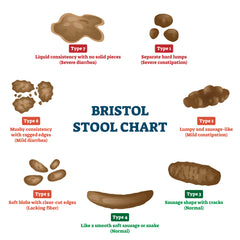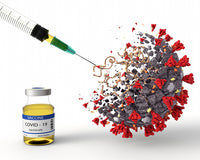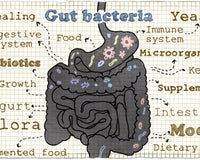Did you know that your gut is mainly responsible for the critical functions of your body?
A healthy gut means healthy overall well-being, and many wide-ranging causes can change and affect gut health.
These changes can be from acute causes, such as gastrointestinal surgeries, to others, such as the normal aging process, affecting gastrointestinal motility.
Regardless of the reason, the intestines usually experience changes during the healing or aging process.
That said, despite any shifts, it’s essential to get back on track as soon as possible and make the gut the best it can be.
Here are a few things to consider.
What influences changes in the gut?
Let’s start with the concept of bacteria.
Our gut has more than 100 trillion bacterias. Yup! You read that, right! But wait, bacteria is not a bad thing.
The bacteria in our gut help digest food, absorb nutrients and manage our wellbeing.
Many of these bacteria are beneficial, and evidence has shown that good gut health is linked to supporting general health, including the immune system and brain.
The bacteria feed on dietary fiber while performing various duties, including helping to make vitamins B and K and breaking down dietary fiber.
This breakdown results in a release of beneficial, anti-inflammatory fatty acids, vital energy sources for our bodies.
Here’s another gut question you should ask yourself.
Did you know that 70% of your immune system resides in your gut?
Most of the time, when your immune system is weak, it traces back to what is happening in your gut.
Just knowing that allows you to change what you are putting in your body to enhance your immune health.
For optimal immunity, detoxification and nourishment, your gut must be in balance.
It’s that simple.
Our brain and gut are connected by a network of neurons, chemicals, and hormones.
How does your body know when it’s hungry?
The gut-brain connection means that poor digestive health can even lead to mood disorders.
Now, not all bacteria are good bacteria.
You need to get rid of some of the harmful bacteria and replace them with beneficial bacteria.
Probiotics can help with this! Note that an imbalance of bacteria, meaning more harmful bacteria, can lead to limited space for the good guys.
However, certain gastrointestinal conditions can lead to changes in the gut’s microbial environment and result in poor health and wellness.
Common sources of gut-health changes include shifts in gut immunity, stomach acid, and gastrointestinal flora (that is, the ecosystem of over 400 bacterial species that make up the microbiome).
Some digestive changes—including compromised gut function—are simply caused by the aging process.
This is because of our natural metabolic processes slow as we grow older.
How to Identify your Gut Problems
Look at your poop! Here's a chart to help you.

Best ways to support common gastrointestinal changes
So how can we avoid intestinal changes that may affect gut health?
Here are some preventive strategies that may help keep your gastrointestinal health in check:
- Get plenty of exercise.
To ward off age-related issues, including those associated with poor intestine health, aim for at least 30 minutes of exercise five days per week.
Physical activity will help you stay regular and may keep your digestive system in good working order.
- Maintain a healthy weight.
While frequent exercise is linked to weight management, a healthy weight can prevent digestive changes and age-related gut struggles.
Aim to consume healthy portion sizes and whole foods when possible.
- Drink lots of water.
To promote a strong and healthy digestive tract, aim to drink fluids throughout the day.
Drink water until you no longer feel thirsty, and if you are taking any prescription medications, please discuss water intake directly with your supervising doctor before any changes.
Best Supplements to achieving a Healthy Gut
Many foods and supplements are connected to a healthy gut and a healthy digestive tract.
Some options to explore include:
1. Probiotics
Probiotics are another thing that can help you achieve a healthy gut.
Probiotics are live bacteria and yeasts that are good for your health, especially your digestive system.
Probiotics are known as the “good” bacteria that help keep your gut in top shape.
Where are probiotics found?
Well, to answer your question, they’re not as hard to find as you think.
The foods listed above are known probiotic-rich foods.
The importance of probiotics has long been known, but what about prebiotics?
To put it into simple words, prebiotics act as food for probiotics.
They are a type of fiber.
You’re probably already eating prebiotic-rich foods and may not even know it.
While only strain-identified probiotics have been researched extensively for specific health benefits, fermented foods, such as kimchi, miso soup, kombucha, and kefir, are popular dietary sources of probiotics.
Most probiotics come from one of the following genera of bacteria:
Lactobacilli
This is the most common probiotic genus.
Found in yogurt, sauerkraut, and other fermented foods, lactobacilli can help support immune health, such as healthy nasal, sinus, and respiratory function.
Bifidobacteria
Another common and well-researched probiotic genus, specific Bifidobacteria strains, supports acute bowel distress and immune health and may help control body weight regulation.
2. Prebiotics
Prebiotics are fibrous carbs the human body cannot digest (but certain bacteria in the gut can).
They serve as food for probiotics and include oats, garlic, onions, apple skin, beans, and chicory root.
Much like probiotics, prebiotics encourages healthy digestion.
3. Fiber
When it comes to improving our digestive health, fiber—also known as roughage—is crucial.
The body cannot digest it; instead, it passes through the stomach, small intestine, and colon more or less intact.
Fruits and vegetables, whole grains, beans, and legumes are all rich in fiber.
Fibrous ingredients are generally full of nutrients as well, which may enhance our absorption abilities.
There are two types of fiber, one of which is more closely linked to the digestive system:
Soluble fiber
Soluble fiber dissolves in water and may help support already healthy cholesterol and glucose levels. It is found in oats, beans, apples, peas, and other ingredients.
Insoluble fiber
Insoluble fiber does not dissolve in water. It does, however, increase stool bulk and ensure material moves efficiently through the digestive tract.
Whole-wheat flour, nuts, bran, and vegetables like cauliflower and potatoes are good insoluble fiber sources.
Be sure to discuss your fiber intake with your healthcare practitioner to minimize the chances of discomfort.
4. Glutamine
This amino acid provides both a source of fuel and precursors for growth to the intestinal lining’s rapidly dividing cells.
5. Inner-leaf aloe
Sourced from the aloe vera plant, inner-leaf aloe has been shown in studies to support temporary digestive symptoms such as cramping, bloating, and flatulence.
It has also been shown to help a healthy intestinal lining.
6. Zinc-carnosine
Ideal for gastric comfort, zinc-carnosine works by supporting the healthy ecology and integrity of the stomach lining.
Your Gut is your second Brain
You’ve probably heard the expression, “prevention is the best form of medicine.” Prevention is admittedly king in a healthcare setting, but it also involves hard work and dedication.












